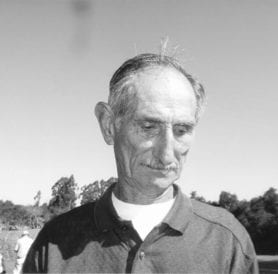 Every portrait painting is the result of a series of steps. Some artists have fewer steps than others, and most artists are eager to grab their paints and dive right into the color process. But those who simply pose their model and start painting are taking a lot of chances, such as improperly placing the model on the canvas or discovering a more interesting pose once you’ve already begun. After many hours of your hard work and your model’s patient posing, you don’t want to wipe it all off and start over again.
Every portrait painting is the result of a series of steps. Some artists have fewer steps than others, and most artists are eager to grab their paints and dive right into the color process. But those who simply pose their model and start painting are taking a lot of chances, such as improperly placing the model on the canvas or discovering a more interesting pose once you’ve already begun. After many hours of your hard work and your model’s patient posing, you don’t want to wipe it all off and start over again.
That’s why preliminary drawings are such an effective portrait tool because they help solve problems before they happen. Drawings let you map out your subject and get acquainted with all the hidden things you’ll need to know about him or her. Take bone structure, for instance — every skull is similar, but there are always subtle variations that can make a big difference in the portrait. You must be as aware of the unseen side of your subject as you are of the visible side. If you’re guessing, the viewer will know it.
Use drawings to get to know your subject before you begin the actual portrait. For some artists this may take no more than a few sketches and suggested values.
 This kind of familiarity also pays off because with a live model, no matter how good a model he or she is, your subject is frequently changing. There are many muscles in the human head, more than in any other part of the body, and nearly all of them move when the expression changes on the subject’s face. If you can learn some thing about what muscles made the expression you want, then you can compensate for subtle changes (A smile, for instance, consists of much more than just upturned corners of the mouth.)
This kind of familiarity also pays off because with a live model, no matter how good a model he or she is, your subject is frequently changing. There are many muscles in the human head, more than in any other part of the body, and nearly all of them move when the expression changes on the subject’s face. If you can learn some thing about what muscles made the expression you want, then you can compensate for subtle changes (A smile, for instance, consists of much more than just upturned corners of the mouth.)
Put a little preparation into each portrait you do by starting off with preliminary drawings. You’ll soon find that a little investment up front can save you a lot of trouble later on, and it brings an important step closer to making your portraits the best they can be.
I have a good friend, Frank, who has wonderful bone structure. Every bone is right up front where I can see it. I snapped two photos of him, not pretty, smiley photos, but character studies. I wanted to show his bones and wrinkles off to their greatest advantage.
 Portrait Pointer: when you can’t find a model who is willing to sit for several hours, go for photography. Be ready with your camera when a great face comes your way. Just remember, don’t just copy the photo, study the bone structure and value patterns the same as you would when using a live model. Measuring is very necessary. Remember, every skull is different. Don’t generalize. Drawing is not only necessary to portraiture but a beautiful and fun form of art.
Portrait Pointer: when you can’t find a model who is willing to sit for several hours, go for photography. Be ready with your camera when a great face comes your way. Just remember, don’t just copy the photo, study the bone structure and value patterns the same as you would when using a live model. Measuring is very necessary. Remember, every skull is different. Don’t generalize. Drawing is not only necessary to portraiture but a beautiful and fun form of art.